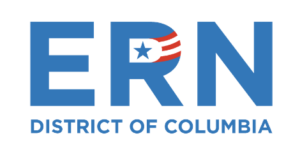
DC Council Committee of the Whole and Committee on Education
Joint Public Oversight Hearing
Distance Learning in DC Public and Public Charter Schools
October 2, 2020
Ramin Taheri, Director, Education Reform Now DC
Good afternoon, Chairman Mendelson, Chairperson Grosso, and members of the DC Council. My name is Ramin Taheri, and I am a Ward 6 resident and the father of two students in DC Public Schools. I am also the director of Education Reform Now DC, a non-profit organization that fights for a public education system that justly and equitably serves all students in DC. I am pleased to provide testimony today on distance learning in our public schools.
I want to begin by expressing my deep gratitude for our teachers and school leaders. They are putting forth extraordinary efforts to make learning work in circumstances that are nearly unworkable. My own children’s teachers of course are from DCPS, but I know the same can be said of all public school teachers across both sectors. A special thank-you goes to those educators who are working in-person with students. They are truly heroes and deserve recognition.
I use the word “unworkable” because it accurately describes distance learning, despite all the best efforts by educators and policymakers. There is simply no effective way to replace in-person instruction, and our children will feel the effects for years to come. One analysis suggests that distance learning last spring “may have reduced reading gains by 30% and math gains by 50%” compared with in-person teaching. And this refers to all students, without acknowledging the greater harm done to the students most at risk of falling behind academically, such as students with special needs. By now you have probably read the article in the New Yorker about Shemar, a 12-year-old student in Baltimore, and his struggles with distance learning. The story is heartbreaking: a bright student from a troubled home who lost a lifeline when schools closed and distance learning began. Shemar, like many students from low-income families, is falling behind academically and emotionally. The consequences of COVID-related school closures will likely impact Shemar — and students like him — forever. How many Shemars are there in DC’s public schools? And what can we do?
First, now more than ever before, we must, as a city, redouble our commitment to investing in underserved students and communities, including through digital devices and connectivity, academic supports, and mental-health services. We know that the opportunity gaps that existed prior to the pandemic are likely to widen, not merely because at-risk students lack the resources to navigate distance learning, but because privileged families have seized the chance to further hoard their good fortune, allowing their students to make strides in insulated, intensive learning environments. Our focus now should be the social contract that obligates us all to ensure that the least-advantaged among us are given the same opportunity to live and thrive as those born into privilege and prosperity.
Second, we must commit to measuring and understanding where our students are, academically, so they can get the support they need. There have been loud cries to cancel all assessments of student progress during the pandemic. That would be a mistake. As the Center for American Progress has noted, “[p]arents, educators, administrators, and policymakers need more information about how students are doing and being served, not less.”
Third, we must focus on creative but effective interventions that can mitigate the effects of learning loss, especially the disproportionate harms experienced by our most vulnerable students. Our recovery efforts should include high-dosage tutoring, for example, which can provide personalized academic support to help students more quickly access grade-level content after months out of the classroom. We know that it works, in part because it’s working now with privileged families using their own exclusive “learning pods.”
Finally, as we begin to transition back to in-person instruction, whenever that may be, we must focus on the social-emotional well-being of our students, especially those we know have experienced increased trauma during the pandemic. This must include increased investments in mental-health supports. It will be nearly impossible to expect teaching and learning to occur in a crisis without first attending to these needs.
In closing, as has been said many times, we are all in this together. And it will take a concerted, citywide effort to successfully lead our students out of the academic crisis that has developed because of COVID-19. Thank you for allowing me to testify today. I welcome any questions the Committees may have.
##